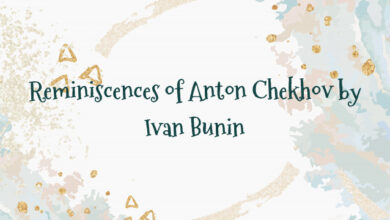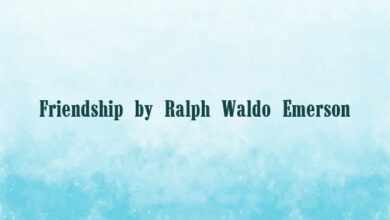
Nino Popiashvili – Woman writer – Georgian literary experience
From the beginning of mankind till today woman has been a source of inspiration; however woman’s role in social, political, economic and other important spheres has been subject of dispute. Development of society has caused women to feel more self-conscious. In addition, men and women’s roles and social stereotypes have been reconsidered and new conclusions, viewpoints and attitudes have been established.
After the commencement of politically motivated women’s movement in the 60s of the 20th century, some viewpoints about a woman’s role have been altered in literature and scholarly world. On the one hand, women authors’ emancipated literature appeared which were created on the basis of women’s stories. On the other hand, there emerged feminist literary theory, which established the concept of female author (femininity, as an ethic category) in literary theory (English- Femininity, German – die Weiblichkeit, Russian – Женственность).
According to feminist criticism, women writers’ texts are distinguished as they expose experience, emotions and, in general, thoughts motivated by women. The emergence and development of feminist literature was politically conditioned in its basis. The primary aim of this theory was to motivate women and facilitate their literary activities by means of critical analysis, even with conscious marginal preconditions.
In parallel with studies oriented on women, in the last decade scholars started to draw their attention to gender studies. Like in feminist literary studies, here emphasis is made on the issue of role distribution between men and women which is not based on biological sex-distinction. If in feminist literary studies biological difference is represented by an English term – sex, in gender studies it became possible to determine social and cultural components. Nowadays, a term taken from grammar – gender is widely used.
Unlike feminist studies, the main concern of gender studies is not the issue of femininity. Gender definitions in socio-cultural, historical and public discourse are represented as the main objective of gender studies. Currently, term gender is equally used in humanities and social sciences as well as law and economics. Each field defines the term in accordance to its specificity.
If we consider literature as continuation of collective, folklore texts and have a look through ancient era, it will become obvious that female authors coexisted among numerous men writers. As it is known, Greek poet Sappho was named by Plato among top 10 writers.
In medieval centuries, churches and monasteries served as main educational institutions where it was possible to acquire basic literacy skills and read books. For women there were only limited possibilities and mainly in Europe. They could acquire the profession of a nanny (governess) and become educated to some extent.
In the era of renaissance and humanism, when individuality of a human being, self-cognition and the desire to take insight into oneself rose, there emerged some possibilities for women to become educated. They started to make education available for both sexes as it was envisaged as a precondition for humanistic relations in family. For example, Agrippa Von Nettesheim and Erasmus Von Rotterdam supported the availability of education for women.
Despite the fact that through creative works women strived to display a universe perceived by women and based on their own experiences, women’s fiction writings were not appropriately perceived. Women writers’ works had to be evaluated from the perspective of women readers and women critics. Only in that case it was possible to see the real and genuine thoughts of women writers. Only women’s society was able to comprehend women writer’s texts, feel their thoughts and meanings, which was unachievable by that time.
In order to defend their own ideas and opinions and preserve their works and provoke positive opinions among readers, many women writers had to avoid their names and write under male pen-names. In the 18th and 19th centuries women wrote anonymously, without signing their works or they wrote under male pen-name. This was the only way for most women to penetrate into literary world which was legitimate only for men.
From the beginning of the 20th century a number of formal-legislative amendments were made concerning women’s issue. High schools for girls were founded, which made it possible to get higher education, a lot of professions and work places became available for women which were previously occupied only by men. In the 20s of the 20th century women were granted the right to vote. Correspondingly, social changes were reflected in women writers’ creative works.
It is worth mentioning that since women’s writing became a discrete area of literary studies there emerged a need to divide their works into periods and define their historical-cultural characteristics. According to some scholars, in spite of the fact that women’s writings are wide and belong to different historical periods, their study should be started from the period of activation of women’s movement, in other words from the period when women writers commenced to create their writings consciously and from the position of women writers, with new literary viewpoints where woman’s position, her universe, viewpoints, perspectives and interests where highlighted. As it is known there were times when woman only participated in literary processes, when there was no gender definition in literary studies, when woman was obliged to be only participant of literary processes, which was dominantly masculine, when woman even had to write under male pen-name in order her texts to be adequately perceived and attention to be drawn. It is obvious that women writings of that time could not reflect the nature and literary content which was peculiar for women writings later. However, in spite of the above mentioned, creative works of women writers are frequently analyzed by taking into consideration common features, existing historical and social factors.
In comparison to Western literature, Eastern literature with its traditions and dichotomy was much more “masculine”. It is primarily conditioned by eastern nature. Woman, an object of love and obedience, only rarely managed to literary transform her interests, desires and longings and reflect them in literature. East was more austere towards women and this attitude could be traced back to religion.
The issue of women authors, the place and role of gender-marked literature in Georgian literature is completely unstudied. The manifold nature of the issue, in addition historical and contemporary processes which exist in Georgian literature serve as a proof that this issue should be thoroughly studied in future.
Fiction and Literature are the world of the author, the creator, which is full of the author’s perception of the world, the author’s ideas, impressions, attitudes, desires, goals and intentions and many more features that are outlined in Fiction. Sensations, performances and attitudes are universal and do not vary due to gender. Literary text equally accommodates in general, universal, common desires and expectations of both women and men, , but often, a woman-author’s perceived world is more delicate artistically and differs from the text by the member of “the stronger sex”; it as much more emotional and colorful, and text has different architectonics, content, beginning and ending as well.
If we appeal to the literary traditions and remember, we will see that the authors of Georgia and elsewhere, for centuries were mostly men. In Georgian literature, women’s literature begins by Queen Borena (in the eleventh century, the wife of Georgian King Bagrat the fourth, the daughter of Ossetian King). She dedicated a verse in iambic pentameter to Saint Mary. Queen Borena’s iambic verse is very sophisticated and an important form of art. In early times iambic pentameter had a very simple form, but Queen Borena’s verse is well-formulated and refined to perfection.
Naturally, many of the feminine works did not survive and reach us. We can only assume that the authors in Georgian literature were also women authors. Georgian literary law for various reasons is not favorable to women, although Georgian princesses (The daughters of the king Erekle II: Ketevan, Mariam and Tekla Princesses) poetic creations should be mentioned. Here it is clear that the romantic tendencies, which, as has been recognized, on grounds of nationality laid the foundation of Georgian romanticism.
After the loss of independence and Russia’s accession became an uncured pain for Georgian intelligence. Among them were women. Women participated in the 1832 coup in which was intended to struggle for Georgia’s independence.
It should be noted that in Georgia in the second half of the nineteenth century Women’s movement started to exist, which aimed at expanding women’s rights. In this regard, worth mentioning is the activities of Barbare Eristavi-Jorjadze. Barbara was twelve years old when she was married. The young woman was totally unprepared for this stage of life , but she obeyed her fate; They settled in Gremi, with her husband a former military officer, Zakaria Jorjadze. As a young woman she already became mother of three children ( Michael, Noshrevani, Manana). Barbare Jorjadze frequently published articles in the newspaper ” Iveria ” on a variety of social issues, trying to express an opinion on women’s rights , which caused an aggressive reaction in men.
Georgian Women’s Movement as a political phenomenon did not exist, although it should be noted that in 1919 , the first democratic elections in the Republic of Georgia, the right to vote was given to all citizens above 20 years old , regardless of gender or national origin. As we can see , the role of women spurred in the twentieth century and the twenty-first century already saw the further strengthening of the role of women.
Female authors, or women-writers were needed by the Soviet Georgia almost as that of women tractorists, or, women drivers. Therefore, along with A.Machavariani’s, Michael Kvlividze’s Otar Chiladze’s poems and novels were published Anna Mkheidze’s stories (Journal Tsiskari, 1981, #2), along with Besik Kharanauli and Jansug Charkviani – Malvina Mukbaniani’s and Janeta Koridze’s stories (Journal Tsiskari, 1981, #9). Collections, verses, short stories and even novels by women authors were being published, but it is not surprising that men produced more than women.
Literature – loving women were mainly involved in scientific research, became post-graduate students or candidates, defended their thesis and then, in the best case, were higher educational lecturers and even they remembered their poetry-literary sentiments, they were fully committed to teaching Western literature and history of Georgian literature. However, it must be said that there are good drivers, including women and there are really good women writers, including in the Soviet Georgia. Women author as a separate identity is identified in post-Soviet Georgian literature.
The activation of women writers on literary arena in the post-Soviet era became necessary due to the values and stories that the women had to tell. Woman, as a condition, and woman as the problem became the subject of a separate interest.
The feminine factor of Female authors in many cases is completely clear, in some cases, there is no boundary between men’s and women’s creativity. The role and purpose is often more apparent in the case of women. Feelings and desires in a woman’s compassion, and a key feature of the main women author. Therefore, their creations are experiencing a variety of emotions and feelings, the only woman have.
Literature:
Khamenei 2003 Sosan Jafari Parast Khamenei, Zu den Weiblichkeitsbildern im islamischen Fundamentalismus und deren Entgrenzung in der modernen iranischen Prosa am Beispiel der Werke von Scharnusch Parsipur, Inauguraldissertation zur Erlangung der Doktorwürde am Fachbereich III Sprach- und Literaturwissenschaften der Universität Gesamthochschule Siegen, Berlin, im September 2003, urn:nbn:de:hbz:467-774
Laakoff 1975 Laakoff, R. T. Language and woman*s place. New York: Harper & Row, 1975
Маслова 2001 Маслова В. Лингвокультурология, Для студентов высших учебных заведений, Москва, 2001,
УДК 008(100)(075.8) ББК 81.2-5я73 М31
Peters 1988 Peters ursula, Religiöse Erfahrung als literarisches Faktum. Zur Vorgeschichte und Genese
frauenmystischer Texte des 13. und 14. Jahrhunderts. Tübingen 1988.
Richter-Schroeder 1986 Richter-Schroeder Karin, Frauenliteratur und weibliche Identitaet, Frankfurt am Mein,
Hain, 1986
Schlieker 2003 Kerstin Schlieker, Frauenreisen in den Orient zu Beginn des 20. Jahrhunderts (Weibliche
Strategien der Erfahrung und textuellen Vermittlung kultureller Fremde, Disertation zur
erlangung akademischen Grades eines Doktors der Philosophie der Philosophischen
Fakultaeten der Universitaet des Saarlandes), Verkag fuer Wissenschaft und Kultur, 2003.
Tsiskari 1981 Literary Journal Tsiskari, Tbilisi 1981, #2
Tsiskari 1984 Literary Journal Tsiskari, Tbilisi 1984, #9
Nino Popiahvili – Woman writer – Georgian literary experience
From the beginning of mankind till today woman has been a source of inspiration; however woman’s role in social, political, economic and other important spheres has been subject of dispute. Development of society has caused women to feel more self-conscious. In addition, men and women’s roles and social stereotypes have been reconsidered and new conclusions, viewpoints and attitudes have been established.
After the commencement of politically motivated women’s movement in the 60s of the 20th century, some viewpoints about a woman’s role have been altered in literature and scholarly world. On the one hand, women authors’ emancipated literature appeared which were created on the basis of women’s stories. On the other hand, there emerged feminist literary theory, which established the concept of female author (femininity, as an ethic category) in literary theory (English- Femininity, German – die Weiblichkeit, Russian – Женственность).
According to feminist criticism, women writers’ texts are distinguished as they expose experience, emotions and, in general, thoughts motivated by women. The emergence and development of feminist literature was politically conditioned in its basis. The primary aim of this theory was to motivate women and facilitate their literary activities by means of critical analysis, even with conscious marginal preconditions.
The issue of women authors, the place and role of gender-marked literature in Georgian literature is completely unstudied. The manifold nature of the issue, in addition historical and contemporary processes which exist in Georgian literature serve as a proof that this issue should be thoroughly studied in future.
Fiction and Literature are the world of the author, the creator, which is full of the author’s perception of the world, the author’s ideas, impressions, attitudes, desires, goals and intentions and many more features that are outlined in Fiction. Sensations, performances and attitudes are universal and do not vary due to gender. Literary text equally accommodates in general, universal, common desires and expectations of both women and men, , but often, a woman-author’s perceived world is more delicate artistically and differs from the text by the member of “the stronger sex”; it as much more emotional and colorful, and text has different architectonics, content, beginning and ending as well.
Literature – loving women were mainly involved in scientific research, became post-graduate students or candidates, defended their thesis and then, in the best case, were higher educational lecturers and even they remembered their poetry-literary sentiments, they were fully committed to teaching Western literature and history of Georgian literature. However, it must be said that there are good drivers, including women and there are really good women writers, including in the Soviet Georgia. Women author as a separate identity is identified in post-Soviet Georgian literature.
The activation of women writers on literary arena in the post-Soviet era became necessary due to the values and stories that the women had to tell. Woman, as a condition, and woman as the problem became the subject of a separate interest.
The feminine factor of Female authors in many cases is completely clear, in some cases, there is no boundary between men’s and women’s creativity. The role and purpose is often more apparent in the case of women. Feelings and desires in a woman’s compassion, and a key feature of the main women author. Therefore, their creations are experiencing a variety of emotions and feelings, the only woman have.
Key Words:
Woman writer, Georgian literature, feminist criticism.




